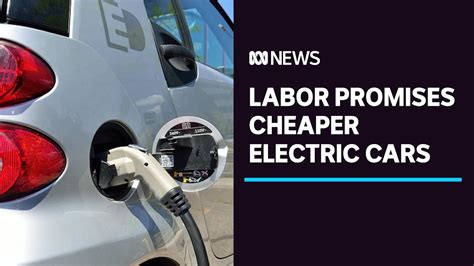Driving Change: How Federal Rebates Are Making Electric Cars More Accessible
In the past decade, the world has witnessed a significant shift towards sustainable living, and electric vehicles (EVs) have taken center stage in that movement. With increasing concerns over climate change, air pollution, and the depletion of fossil fuels, many are turning to electric cars as an alternative to traditional gasoline-powered vehicles. However, the initial cost of electric cars has often been a barrier for potential buyers. Fortunately, federal rebates and incentives are making strides towards making EVs more affordable and accessible to the general public.
The Role of Federal Rebates
Federal rebates play a crucial role in the promotion and adoption of electric vehicles. In the United States, the federal government offers a variety of tax credits and rebates specifically aimed at reducing the financial burden of purchasing an EV. By making EVs more affordable, these incentives encourage individuals and families to make the switch to cleaner transportation options.
Understanding the Federal Tax Credit
One of the most significant incentives available is the federal tax credit, which can be as much as $7,500 for eligible electric and plug-in hybrid vehicles. This credit reduces the amount owed on federal taxes for buyers who purchase qualifying EVs. However, it’s essential to note that the exact amount of the credit depends on the make and model of the car, as well as the manufacturer’s sales numbers. As manufacturers reach a cap on the number of cars eligible for the credit, some may no longer qualify for the full rebate.
State-Level Incentives
While federal rebates are a significant step towards making electric cars more accessible, state-level incentives complement these efforts. Many states offer additional rebates, tax credits, and grants aimed at encouraging EV ownership. For example, states like California and New York have implemented state-specific credits that can further reduce the cost of electric vehicles. Additionally, some states provide incentives such as reduced registration fees, access to carpool lanes, and free charging stations.
Making Electric Cars Affordable
Purchasing an electric car can still be an expensive investment upfront. However, federal rebates and state incentives have significantly impacted overall affordability. In fact, studies suggest that when considering tax incentives, the total cost of ownership for an electric vehicle can be similar to or even less than that of a gasoline vehicle after several years of ownership.
Long-Term Savings
In addition to the lower upfront costs provided by federal and state incentives, electric vehicles offer various long-term savings. EV owners often benefit from lower fueling costs, as electricity tends to be cheaper than gasoline. Furthermore, they require less maintenance than traditional vehicles, significantly reducing long-term ownership costs. These factors make electric vehicles a financially attractive option for buyers.
The Environmental Impact
The transition to electric vehicles is not solely motivated by financial incentives; environmental considerations also play a significant role. EVs produce zero tailpipe emissions, which significantly reduces air pollution and greenhouse gas emissions. By driving electric, consumers contribute to improving local air quality, combating climate change, and investing in a more sustainable future.
Challenges and Future Prospects
Despite the available incentives, various challenges still exist regarding the widespread adoption of electric vehicles. Issues such as limited charging infrastructure, range anxiety, and the perception that EVs are unaffordable persist. However, as technology advances and charging networks expand, these barriers are gradually being addressed.
In the coming years, the U.S. government has plans to enhance its efforts to promote electric vehicles further. With initiatives aimed at increasing infrastructure and offering additional incentives, the goal of making electric cars a mainstream choice is closer to realization.
Conclusion
As we drive towards a more sustainable future, federal rebates and state-level incentives are crucial in making electric vehicles more accessible to everyone. The combination of immediate financial relief and long-term savings, coupled with the environmental benefits, presents a compelling case for electric cars. Continued support from the government and an expanding charging infrastructure will pave the way for a more extensive adoption of electric vehicles while contributing positively to our planet.
FAQs
1. How do I know if I’m eligible for the federal tax credit for electric vehicles?
Eligibility for the federal tax credit typically depends on the make and model of the vehicle as well as the manufacturer’s sales figures. Check the IRS website or consult your tax professional for specific details.
2. Are there additional incentives available at the state level?
Yes, many states offer additional rebates, tax credits, or incentives for electric vehicle ownership. Check with your state’s Department of Motor Vehicles or energy office for specific offerings.
3. Can I get a rebate if I purchase a used electric vehicle?
In some cases, yes. Certain states offer incentives for the purchase of used electric vehicles, but this varies by region, so it’s essential to verify the specifics in your state.
4. How much can I save by switching to an electric vehicle?
The savings will depend on your specific situation, including your driving habits, energy costs, and state incentives. Generally, EV owners save on fuel and maintenance costs compared to traditional gasoline vehicles.
5. What are some other benefits of driving an electric vehicle?
Besides financial benefits, electric vehicles contribute to reduced air pollution, lower greenhouse gas emissions, and state and local incentives such as tax reductions and access to carpool lanes.
Download Federal Rebate Electric Car
